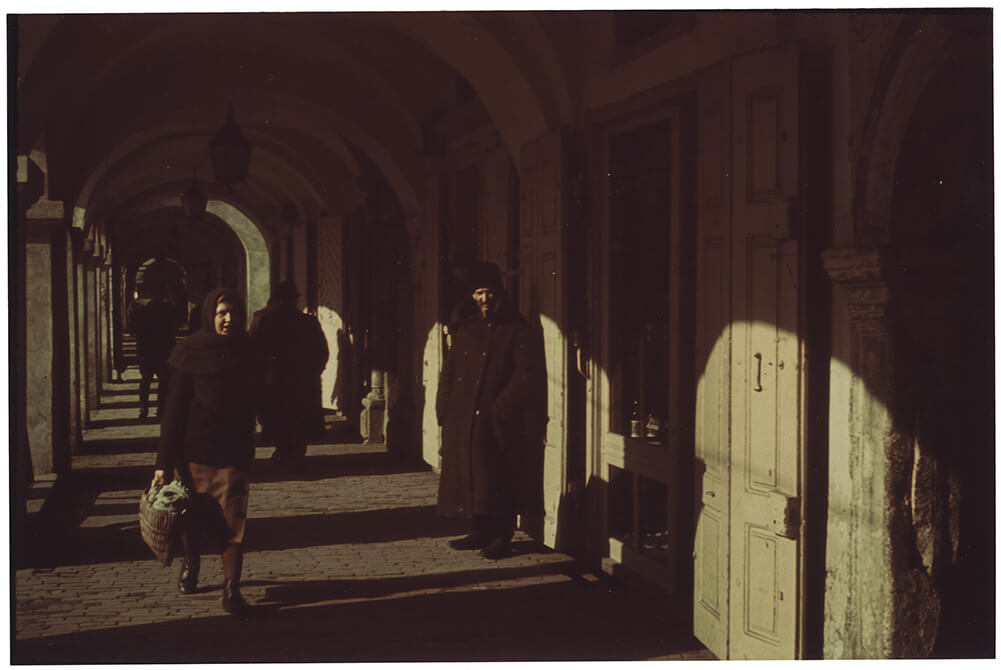Zamość

The square in Zamość, where roll-calls of Jewish prisoners were held, photographed by Max Kirnberger, an officer in the Wehrmacht Signal Corps (Fernmeldetruppe).
Deutsches Historisches Museum, BerlinAt the end of April and beginning of May 1942, the Zamość ghetto was the destination for three transports of Jewish prisoners from Dortmund and Terezín. Living conditions were just as dire as in the other ghettoes. In addition to the lack of food, there was a catastrophic water shortage. All of the ghetto inhabitants lived in fear of early-morning raids during which the Gestapo and Police closed all the exits from the town, dragged the prisoners out of their homes, drove them onto the square, loaded them onto freight cars and sent them away. All the Jews were herded into the square and lined up on the morning of 16 October 1942. Before midday, about 4,000 prisoners set off on foot to the ghetto in Izbica, which was 21 kilometres away. Before long, they were then taken to the extermination camps of Bełźec and Sobibór.
Two transports from the Terezín ghetto were dispatched to Zamość: Transport Ar (28 April 1942) and Transport As (30 April 1942). The prisoners on the first transport were lucky to arrive with their luggage; the luggage wagon on the second transport was uncoupled from the train at Lublin station, so the deportees were left with only what they had with them. The first transport was billeted in the ghetto. A few days later the elderly were taken away to work in nearby Komarów; the others worked on land amelioration and road construction. Upon arrival, the prisoners from the second transport were placed in old wooden barracks near the railway station. A group of able-bodied men were selected from among them. Some laid cables while others were put to work at the military air base in Łabunie. The prisoners from both transports who were not fit for work were gassed in the extermination camps of Sobibór and Belźec. There were only 28 survivors.
